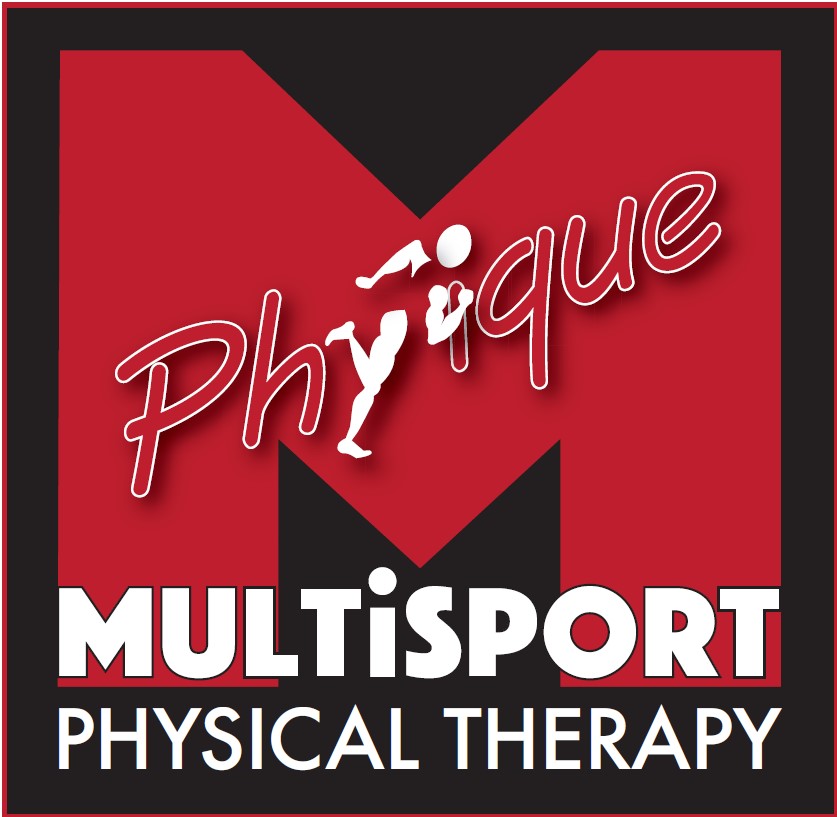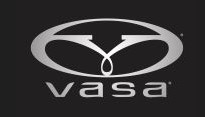Bob Baranek

I had the chance recently to talk Ironman and triathlon with Bob Baranek. Bob qualified for the Hawaiian Ironman with a 9:49:06 placing him 4th in the men’s 40-44 age group at Ironman Coeur d’Alene on June 26.
CZ: What Ironman races have you done and what were your times?
BB: My first Ironman was Hawaii in 1997. I finished the race in 10:14. 1997 was the year that Chris Leigh collapsed a few hundred yards from the finish and Sian Welch and Wendy Ingram crawled across the finish line. I also asked my wife to marry me a few days prior to the race while we were on vacation on the Big Island. I’m sure she had to be thinking what am I getting myself into too.
My next Ironman was the inaugural Ironman USA in Lake Placid in 1999. We spent most of that year training and racing with Dan and Erica Ingle. Dan and I finished the race together in 10:09. 10:09 was good enough to get us both to Kona. At one point on the bike, I was in 5th place. It was an amazing and shocking experience all at the same time. At about mile 70 I started having problems with leg cramps. The cramps remained with me for the rest of the race.
Hawaii 1999 was the first Ironman that I felt I raced to my potential. The cramping that affected me in my first two Ironmans didn’t return and I was consistent all day. I finished in 9:33.
CZ: What was your race like at Coeur d’Alene?
BB: I liked everything about racing in Coeur d’Alene. The city is beautiful. The crowd and volunteer support was amazing. Most of the course was fantastic. There is a small section of the bike on the way back into town that was unique. They sent us through a couple of parking lots, half way around a paved quarter mile track and then across a plywood bridge. Besides those obstacles, everything else was fantastic. I would definitely recommend the race.
I was happy with my overall performance for my first Ironman in six years. I made some mental mistakes and I need to make some minor adjustments prior to racing in Hawaii. I didn’t tighten my goggles enough and they filled with water when I dove in. I couldn’t see a thing for the first 200 yards. Once I felt I had a little room, I pulled them down and swam without them the rest of the way. It took me until the first turn to recover from that one. Then I ran down the wrong bike row even though I walked that portion of the transition prior to the race.
The guy who won my age division and I went head to head from mile 10 on the bike through mile three on the run. It was fun going through town side by side on the run. Then he turned it up a bit and I decided not to go with him. I didn’t want to risk running myself out of a qualifying spot. I’ve had meltdowns on the run before and I didn’t want to repeat. My run training from California half to CDA IM was weak at best. My goals for the race were to qualify for Hawaii, and then if I was lucky…a podium finish. I knew if I kept moving I was going to be in good shape. You and I talked about this exact scenario at the club race just one week earlier. Once you stop your forward progress is when you lose huge chunks of time in a hurry. Plus, Dan Ingle was watching the race on Ironmanlive.com and relaying split times to my wife. I knew I had several minutes between me and the fifth and ninth place guy. Life was good. As you said earlier, I finished the race in 9:49. Good enough for 4th place in my age group and a spot to Kona.
I wound up spending time in the medical tent for the first time in my Ironman history. The weird thing about it was I didn’t go in until a couple hours after I finished the race. I got my massage, ate some food (as much as I could, my stomach is always a mess after I finish an Ironman), sat in the hot tub, changed clothes, walked around, watched some people finish. Then it all happened. I went into a restaurant to use the facilities and I felt like I was going to pass out. I stumbled to a table to sit down. While I was sitting there with my head down, I heard this lady say “I think that guy needs help”. Before long I was in the back of an ambulance heading back down to the medical tent. After two iv’s later…I felt much better.
CZ: I recall that you qualified for your first trip to Kona by doing Mike and Rob’s Most Excellent Triathlon which was a Half Ironman. Since you’ve qualified via the Half and the Full, do you think people should have to qualify for Kona by doing a Full Ironman?
BB: I haven’t given this topic much thought. I can see both sides of the argument. As a parent, it’s nice to have the option to qualify at something less than an Ironman. But it’s so hard to qualify at a ½ Ironman these days due to the limited number of slots. There was one slot for 290 guys in the 35-39 age group at the Ralph’s California Half this year. Then again, I can also see the point of Boston Marathon argument, which is you should prove you have the ability to do the distance. I think I’ll let the Ironman gods sort this one out.
CZ: Your best sports are the swim and bike and then you have a courageous ability to “hang on” during the run. Given those skill sets, what are the key workouts you focus on to prepare for an Ironman?
BB: My strengths are definitely in the water and on the bike. When I read the April fools joke on Ironmanlive.com about lengthening the swim at Kona to 3.5 miles, I just about jumped out of my chair. I was one of the people that was bummed when I found out it was a joke. Lengthen away.
My swim training consists mainly of masters workouts. I will do additional speed work or strength work on my own during certain times. About 95% of my swim training is done in the pool.
The weekend ride is a big part of bike training. I personally like to get in a couple of over distance rides in the east county prior to an Ironman.
I have been experimenting with new things on the run this year. If everything is going well, I like over distance runs in this area as well. My ability to hold on in the run is also largely determined by my weight. I am better than I have ever been about maintaining a certain weight.
CZ: What was your weekly routine during your big Ironman training period?
BB: The nine weeks prior to the race looked like:
Big Week Average for the 9 weeks
times duration des times duration des
Swim 6 22,600 yrds 3.5 13,750 yrds
Bike 6 15 hours 3.2 7.75 hours
Run 4 5.3 hours 2.5 2.5 hours
My running was much lighter than I would have liked going into an Ironman race. I had some calf problems and wasn’t able to train as much as I would have liked.
CZ: That’s interesting. It seems that we both agree you must do a lot of mileage to really succeed at Ironman distance racing. While your approach is to exploit your strengths (the swim and the bike), mine is to focus on my weaknesses (also the swim and the bike). After you and Kim had your baby you took a couple of years off from triathlon. What were the biggest challenges in your comeback and how did you overcome them?
BB: The time off was not planned or anticipated. We now have two kids. Brooke is 4 ½ and Carson is 2. I had NO idea how much kids would impact my life and training schedule.
My biggest challenge was finding the time to train consistently and controlling my weight. Prior to kids I was your classic long slow distance guy. A typical day used to consist of a swim in the morning, followed by a commute to work, then a run at night. I would get the big miles in on the weekend. In 1999 my favorite weekend ride was from Pacific Beach to the top of Palomar Mountain and then ride home. Total mileage for the ride is somewhere around 130 miles. I did it 10 times that year. All that training allowed me to eat whatever I wanted when I wanted. During the winter months I would always experience a large fluctuation in weight. My love for food was one reason I took up the sport of triathlon. Prior to kids I didn’t view my fluctuation as a problem. I actually saw the fluctuation as a tool. Train heavy in the Winter and Spring, race light in the Summer. That same style of training worked for such greats as Greg Lemond, Miguel Indurain and Jan Ullrich. Jan has the misfortune of racing in the same era as one of the greatest cyclists ever.
Well, that philosophy went south after Brooke was born in 2000. I wasn’t able to do the same kind of training I did prior to her arrival. During the next four years I kept trying to return to my old ways of training to take off the weight. I just wasn’t able to stay consistent in my workout program for one reason or another. Then the bottom fell out last April. I hit 230 lbs and herniated two disks in my lower back. After the second doctor used the word surgery, I knew it was time to get serious and quick. I took a long hard look at what I was doing. The end result was a completely new approach to working out. My focus now is on less training at a much higher intensity.
Most days start around 4 AM. In the mornings I will either swim (I can get in the pool at 5 AM…..on those mornings, I try to do some house work prior to leaving for the pool), spin in the garage (the other day, Brooke told my mom that I get up really early and ride a bike that goes no where) or run (the neighborhood is a different place at 4 AM). If I’m training for an Ironman, I will also do something after the kids go to sleep a couple nights a week. My wife makes comments like, “I went to bed and you were spinning and I woke up and you were still spinning?” Then on the weekends I get out for road rides or a longer spin or run. It seems to be working for me so far.
CZ: What was your athletic background prior to triathlon?
BB: I spent my formative years in the mid west (Michigan). I started playing competitive ice hockey and baseball at the age of eight. After one season my parents made me choose one sport. I was the oldest of five children and my parents knew they had to get a handle on the kid taxi thing prior to my brothers and sisters entering the world of sport. I have no idea how my parents raised five kids. I can’t even imagine having three more kids running around the house. Thanks Mom and Dad!
I stayed with ice hockey and played until I was 16. Our house in Michigan had a pond behind the house. I played every day I could get out on the ice (the beginning of my cycling legs). One of my greatest memories was playing on the University of Michigan rink. The bleachers went up for what seemed like forever. Sometimes in the morning the ice would create a fog bank. It was the perfect setting to let your mind run.
I was also a paperboy in Poway when I was fifteen. It’s not a sport, but I think it helps explain where some of my strength on the bike comes from. I think it also laid the ground work for some of the crazy training I did in later years. My route had roughly 100 customers. I would get all of the papers on my bike at one time. Most days it was no big deal. Sundays were insane. My bike had a basket in the front and a rack in the back, it was a bomber.
I played Water Polo at Poway High School. I didn’t apply the same commitment or work ethic to Water Polo as I have to other sports. It was definitely a social time for me. Everyday before practice a bunch of guys would do what we called the Jack in the Box 500. We would pile into several cars and race to Jack in the Box. There were less cars on the roads in those days. I remember half the team missed the team photo because we were at Jack in the Box. Needless to say, our coach was not happy.
I swam at Palomar College. My events were the 500, 1000 and 1650 (meets would either have the 1000 or the 1650, so I didn’t have to swim them both in the same meet). It was at Palomar that I met the people responsible for getting me into triathlon. My first triathlon race was Carlsbad in 1986.
CZ: What has been your most creative use of a gel and what was the result?
BB: When you said you wanted to interview me I had a feeling this would make it into the questions. I can’t remember if it was 1998 or 1999. It was pretty early in the run and I felt a blister forming. I started asking people at the aid stations for duct tape. After going through a few stations and not getting any tape, I started going through my options. I thought if I used enough gel on the blister it would provide enough of a barrier to prevent the friction point from continuing to rub. Well, it didn’t work as I had hoped.
CZ: I know your wife Kim has raced her share of triathlons, but last year she did the Breast Cancer Walk. What is that event like?
BB: Kim’s original plan for last year was to run a marathon in celebration of turning 40. She ran the Rock n Roll Marathon a few years back and was hoping to improve upon her first experience. Then we got the call from her mom. She had stage 2 invasive Breast Cancer. Needless to say, the news turned our house upside down for a while. Kim wanted to do something special for her mother, so she opted to participate in the 3 Day Breast Cancer walk. She raised $3500 for the event through the generous donations of friends and family. It is absolutely frightening how many people are forecasted to get breast cancer. Kim says to make sure you get regular mammograms and do monthly exams. The survival rate improves dramatically the earlier you catch the disease.
The 3 Day Breast Cancer walk is a very powerful event. Over the course of the weekend, Kim walked from the Del Mar Fairgrounds to Miramar College to Crown Point Shores in Pacific Beach to downtown San Diego. The closing ceremonies were amazing. I don’t think there was a dry eye. All of the families formed a circle. Then they brought in the volunteers, next were the participants, finally all of the survivors. It was definitely a moving experience.
I am happy to say that Kim’s Mom made it through her treatment and is clear of any cancer. Thanks for supporting Kim last year, Craig.
CZ: Who is your favorite triathlete and why?
BB: My favorite all time would have to be Dave Scott. He came from a swimming background and I like his training philosophy. My favorite modern day triathlete is Cam Widoff. I’ve read an article or two on him and he just seems like a cool guy. My favorite local triathletes are Bob Rosen and Bill Gibbs. When those two get going it’s like watching that movie Grumpy Old Men.
CZ: After Kona, what are your future triathlon goals?
Well I’m back in the sport for as long as my body will let me race. Ironman is going to be a once every five year thing at best until Brooke and Carson get older. At the rate entry fees are going up I may not be able to afford to race Ironman in five years. We’ll see.
I really like the ½ Ironman distance races. I might try to do a championship race at that distance. I would also like to get more involved in the club. This is the first year that I have even remotely paid attention to the Grand Prix points. Don’t you do pretty well in that competition every year?
I can’t believe how big the club is today and how many quality racers there are. I definitely want to utilize the resource more. Thanks Craig.
CZ: And thank you Bob! Good luck in Kona! I hope to join you as I’m hoping to qualify by racing with the Grumpy Old Men at Ironman Canada.








